Characteristics of polyurethane impregnation for concrete
 There are several types of solutions, classified according to their composition and properties.
There are several types of solutions, classified according to their composition and properties.
Sealing impregnation. These compounds are designed to strengthen and seal the top layer of the mineral flooring. They are able to penetrate only the top layer of the mineral material, forming a film on the surface.
But it is erased over time. Periodically, they have to be updated by applying a new layer. These formulations are often used to retain moisture in a ripening solution.
Reinforcing impregnation. It is able to penetrate deeply into the porous structure, forming a dense polymer-concrete layer. As a result of chemical reactions, the top layer of the screed does not form dust even over time.
They are called liquid topping for their truly firming effect. Such compositions are applied both to fresh concrete and to old screed. However, the best result will still be achieved when using reinforcing concrete impregnations on a fresh screed.
When working with old coatings, the consumption of the composition has to be increased.
Hydrophobic impregnation. Gives additional moisture-resistant properties to the solution. In theory, all compounds enhance the resistance of the screed to moisture, but such compositions significantly increase the coefficient of moisture resistance.
However, it should always be remembered that hydrophobic impregnation of concrete, no matter how good it is, will not replace waterproofing.
When using ordinary, colorless, compounds, the appearance of the screed hardly changes. They give a matte or glossy shine, enhancing the original tone of the coating. Along with performance indicators, colored solutions help to increase the aesthetic properties of the surface.
Concrete waterproofing mastic
The mastic can be used both in the air and in contact with the soil, equally well protecting concrete from atmospheric precipitation, and from ground and melt water.
There are two main types of waterproofing mastics:
- Bituminous mastic. One of the cheapest and oldest waterproofing solutions for concrete. The main component of such a coating is bitumen. Hot bitumen mastic is applied. Polymeric additives are added to the material to improve the fluidity, polymerization and elasticity of the cooled coating. In addition, the additives allow the cold application of bitumen mastic.
- Polyurethane mastic. It is made on the basis of acrylic. When dry, it completely polymerizes, creating a dense protective coating on the concrete. Advantages of polyurethane mastic in the speed of drying, immunity to ultraviolet light. Hydrophobic acrylic mastic is also good in that you can add dye to it and tint the coating to the desired color. Also, acrylic-based mastic is lighter than bituminous.
It is convenient to use a mastic coating for waterproofing surfaces of complex relief, as it is applied with a spray gun, less often with a brush or roller. At the same time, you can be sure that both the outer and inner corners will be well processed.
Waterproofing mastic
Mode of application
Polyurethane impregnation can be applied not only to concrete, but also to other mineral substrates, but the technology is always unchanged.
- First of all, using grinding equipment, the concrete surface is leveled, the cement laitance, loose layer, oil, and the layer obtained as a result of ironing are removed.
- The joints are cleaned with a manual grinder, and solid particles of cement and sand are removed with a brush. Thus, the pores of the material are opened.
- Additional three-stage grinding is aimed at obtaining a filler pattern (crushed stone cut). First, rough processing is carried out by 2–5 mm, then moderate grinding, at the end - grinding with a fine-grained abrasive.
- The surface is cleaned of dust with a vacuum cleaner.
- This is followed by a primer with polyurethane impregnation until a uniform layer is formed.The mixture should not be allowed to accumulate in the form of puddles.
- For different grades of concrete (M 150 – M 350), 3 coats are used. When screed concrete of a category greater than M 350, as well as for bricks, slate and ceramic tiles, 2 layers are sufficient. For this, material such as "Politax" is suitable.
- All layers must be thoroughly dried. At a temperature of 0 °, drying will take no less than 6 and no more than 24 hours, at lower, minus temperatures, no less than 16 and no more than 48 hours. A test application of impregnation will help determine the consumption of polyurethane.

To give greater strength, on the contrary, it is recommended to make additional layers. Polyurethane impregnation provides uniform penetration throughout the entire thickness of concrete, enhances the mechanical properties of the material and its chemical resistance, which guarantees an increase in the service life of the structure by 2-3 years, and also simplifies the procedure for maintaining the coating.
In the next video, you are waiting for the application of a hardening impregnation on a concrete floor.
Classification
Depending on the composition, the existing types of impregnations are divided into 2 groups:
- Polymer-based - organic.
- Based on silicate components - inorganic.
Impregnations of the first type work according to the following principle: astringent additives enter the pores and isolate the material from the negative influence of an aggressive environment, giving it water-repellent properties. The composition also prevents the appearance of cement dust and increases the strength of the coating.
Silicate agents do not envelop micropores, but trigger a chemical reaction with molecular compounds. Due to this, the pores become resistant to all kinds of influences and become waterproof.
Acrylic compounds
Acrylic impregnation of concrete floors is characterized by an affordable cost and good quality. It provides enhanced protection of the material from chlorides and moisture, and also isolates it from ultraviolet radiation. The treated surface retains a presentable appearance for a long time and does not fade.

Such means are necessary to remove cement dust from the floor covering. Their service life is short, so every 2-3 years the impregnation must be renewed.
Polyurethane
In contrast to the previous type, polyurethane impregnation has a higher efficiency. She performs the following tasks:
- Removes dust from the surface.
- Gives resistance to chemicals.
- Increases the degree of waterproofing.
- Improves durability.
- Extends the life of the coating.
With the help of such compositions, it is possible to process concrete floors, cement screed, tiles and brick products. Active substances can penetrate to a depth of 6 mm, providing maximum protection against negative factors. The impregnation is suitable for both indoor and outdoor use.
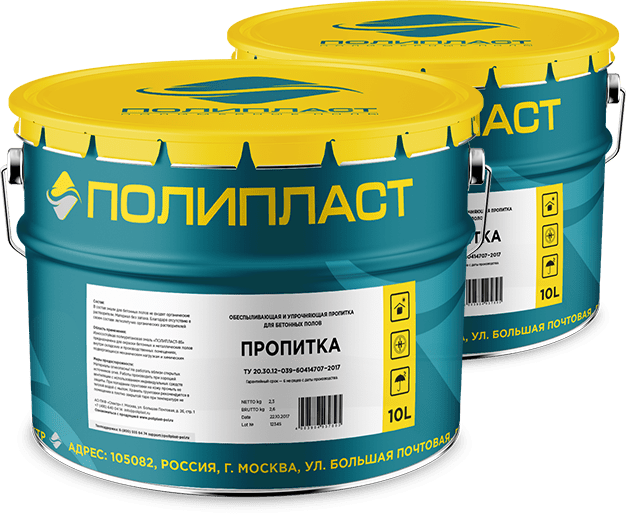
After treating the floor with a product, it receives the following performance characteristics:
- The strength of the concrete surface increases to the standard of the M600 grade, even if the lower series were initially used.
- Wear resistance increases 8-10 times, impact resistance - 2 times.
- The material becomes moisture resistant and is not afraid of direct contact with chemical reagents.
- The problem of the appearance of cement dust is completely eliminated.
- Surface maintenance is quick and easy.
The high popularity of polyurethane-based impregnations is also explained by the following advantages:
- Ease of application.
- Affordable cost of equipment for surface treatment.
- Fast drying time.
Epoxy
Epoxy impregnations for concrete floors are colorless or colored. They are used for interior work, since when exterior is finished, the surface is covered with yellowish spots. The composition of such funds contains 2 components:
- Hardener.
- Epoxy resin.
The curing agent is phenols, tertiary amines and similar additives. Proportions and recipes may vary depending on the application of the impregnation.
Unlike previous types, the epoxy version has the following advantages:
- Increased strength.
- Resistant to abrasive processes.
- Lack of water permeability.
- Minimal shrinkage.
- The possibility of organizing durable floor coverings with an attractive appearance.
Epoxy products do not emit an unpleasant odor during operation, however, they are characterized by instability to chemical reagents. The main areas of use of such impregnations are swimming pools, basement walls, food industry buildings and structures located in areas with high groundwater levels.
Impregnation classification
In this article, we decided to classify impregnations according to their properties and nature of origin. The choice of the composition always begins with the definition of the tasks and the type of surface - for example:
- it is required to protect the floor from the effects of corrosive chemicals (Car Service).
- it is required to strengthen the surface of the screed (M200) for the installation of a self-leveling floor;
- it is required to waterproof the concrete floor of the M250 brand;
Some substances cope well with several operational tasks at once, however, completely universal means do not exist.
We classify by properties
Strengthening and dedusting impregnation for concrete floors
This class of impregnations is used to strengthen weak screeds (especially before applying the topcoat), as well as to increase the strength of concrete structures. Hardening impregnations are almost always deep penetration (4-6 mm).
According to the statements of the top manufacturers of organic and inorganic compounds, the reduced brand strength after processing is M600 on the surface, regardless of the initial one.
Hardening compounds significantly improve the performance properties of concrete - they prevent mechanical and abrasive effects, and most importantly - the formation of dust.

Floor after treatment with hardening impregnation.
The most popular impregnations in this segment are based on a polyurethane compound. These compositions are extremely unpretentious when applied - work can be performed even at negative temperatures and high humidity.
Waterproofing impregnation - prevents the effects of chemicals
Everything is quite simple here, waterproofing impregnations form a membrane on the surface of reinforced concrete structures, preventing moisture from penetrating inside (in particular, precipitation).
For concrete structures outdoors, hydrophobicity primarily provides frost resistance - moisture does not destroy concrete during freeze-thaw cycles.
An untreated RC product becomes unsuitable for further use if it is exposed to moisture and negative temperatures. more than 1 year.
We classify by nature of origin
Organic
Organic concrete impregnators are made on the basis of polyurethane or epoxy resins. There are also acrylic compounds, in fact, these are all the same polymers.
Due to its deep penetration and a wide range of properties combined in one composition, polyurethane impregnation is the most versatile solution.
- Working depth up to 10 mm .;
- Grade strength after processing - M600;
- High chemical resistance;
- Increased impact strength (3 times);
- Perfectly adheres to concrete dust, prevents its further formation.
To achieve the stated results, the polyurethane compound must be mixed in strict accordance with the instructions. If the proportions are violated, you risk getting a film coating instead of penetrating impregnation.
Epoxy impregnation is less common.In this case, a two-component material is used, after mixing it has a significant viscosity, which does not allow it to penetrate into the concrete by more than 1-2 mm.
Acrylic compounds are used under light load conditions, the warranty period of protection is only 1-2 years.
Inorganic
Inorganic impregnations are made on the basis of silicates (water glass). Their principle of action is completely different from organic. Such substances do not glue (seal) the surface, but react with concrete, forming new chemicals. persistent compounds (at the molecular level). In another way, this process is called Fluating.
Fluating does not seal the pores of concrete, however, it significantly strengthens the porous structure itself. After treatment, the floor surface remains vapor-permeable, slightly susceptible to dust formation. Silicates do not form films. The average thickness of the impregnation (on which the chemical reaction takes place) is 5 mm.
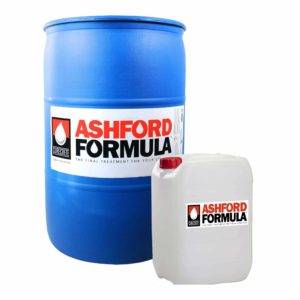
The world's most famous inorganic concrete impregnator is Ashford Formula.
For real hardening of the concrete structure (and not just adhesion of particles and dust), it is necessary to use a mixture that acts precisely at the molecular level - silicate polymers (fluorosilicates) based on inorganic substances. Such compositions are also called lithium impregnations (C2 Hard).
Views
Impregnation for concrete is classified according to the components used:
- Organic hardening mixture - liquid based on acrylic, polyurethane, epoxy resins. The most famous brand is Probetil. Their principle of operation is based on filling the pores with a binder, which gives the surface water-repellent properties, high strength parameters, resistance to aggressive media and dust settling. The polyurethane mixture is universal, the rest have their own specifics.
- Inorganic hardeners, silicate substances or fluates that do not fill micropores, but interact with the surface molecules of the concrete stone. As a result, the surface layer is endowed with inertia with respect to any type of impact.
By area of application

The classification of impregnations according to the scope of use is carried out according to the type of operation of the object being processed. A specific product - deep concrete impregnation - is offered for industrial buildings, public places with high traffic, service stations, parking lots, garages. Special moisture-protective mixtures or water repellents are used in the construction of swimming pools, oil storages, open areas. For pouring screeds, impregnations for concrete floors are recommended.
By the principle of action
The method of influencing the structure of concrete stone for impregnations is different:
- Deep penetrating materials, such as silicates, silanes, silaxins, provide high-quality fluidizing of concrete. Sealants penetrate the pores and react with lime molecules, enhancing the crystallization of calcium in the lime. Consequently, the fluates provide surface strength from the inside.
- Liquid formulations create a thin protective film. Examples are acrylic, polyurethane and epoxy mixes. They provide dedusting of concrete, protection from moisture, increase strength.
By basic properties
 You need to choose an impregnation based on the characteristics, the end result and the price.
You need to choose an impregnation based on the characteristics, the end result and the price.
Each product is endowed with specific properties, provided by the ingredients used for preparation:
- Concrete is treated with epoxy impregnations to provide protection from moisture. The material is made from natural ingredients and is an effective sealant.
- Toners are used to give a surface a shine or a specific shade.
- Polyurethane impregnations are most popular in the manufacture of screeds.The materials make the surface resistant to frost, moisture and heavy loads. Probetil is widely used.
- Inorganic fluates resist wear and increase durability. Fluates strengthen the concrete surface to a great depth. Fluates are widely used to strengthen airfield strips.
- Acrylic impregnating mixtures are characterized by low cost and low efficiency. They are used to strengthen floors and walls in an apartment, unloaded structures.
- The silicone mixture is endowed with water-repellent properties, provides durability up to 10 years. Silicone compounds are ideal protection for exposed surfaces from rain and snow.
By functionality
Functionality allows you to provide concrete with certain qualities. Increase frost resistance, abrasion resistance, chemical and climatic influences of the finished product by increasing the plasticity of the solution. A separate class is impregnation, with the help of which concrete dedusting is carried out.
Colored products, in addition to strength, give the concrete surface a specific color. Toners penetrate to a depth of 3 mm, which ensures high color fastness during intensive use of the structure in the sun. After the color mixture has been applied, it is recommended to cover the concrete with a water repellent.
Examples of manufacturers
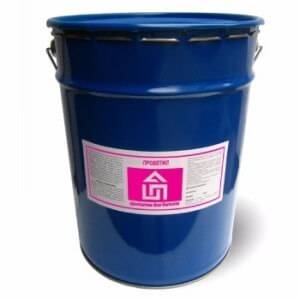 Below is a list of the most popular and quality impregnations:
Below is a list of the most popular and quality impregnations:
- The soil hardening tread for concrete floors is endowed with high resistance to chemical environments, provides maximum reinforcement of the concrete stone and allows the surface to be dust free. The hardener is used to create breathable floors. Providing high-quality adhesion of fresh and old concrete layer allows using the Protector for surface repair. The anti-dust substance is suitable for the arrangement of roads, airfields, sidewalks.
- The inorganic dedusting mixture XTREME HARD is endowed with hydrophobic properties. Silica dust is used for manufacturing.
- Retroplate is a reinforcing mixture that has a dedusting effect on low-grade concrete, mosaic surfaces. Works only at temperatures above 5 ° and on matured concrete.
- Probetil is a special strengthening material with universal properties. Direct use of proethyl is the treatment of industrial floors, which provides protection against aggressive influences, intense loads. The penetration depth was 5-10 mm at an economical consumption.
- Monolith 20-M is a universal water impregnation. Eco-friendly and non-combustible, therefore it is used in the apartment. Penetrates into the surface by 20-30 cm, maintaining air circulation in the pores. Dedusting agents increase the adhesion of concrete to paints and increase its durability.
Review from different manufacturers
When buying a deep penetration impregnation for concrete, the manufacturer must also be taken into account. You should not save money by choosing compositions of unknown companies - such solutions can lay down worse, have worse characteristics. It is better to choose compositions of manufacturers with high reliability ratings, even if they are more expensive.
Reinforcing primer for concrete floors - protector
The main task of the Protector is to increase the strength of the treated surfaces, the resistance of the material to the effects of chemicals. Also, the composition removes dust from the bases. Suitable for processing paths, floor bases in residential areas.
On sale, the Protector is sold in 20-liter containers, which cost from 3,500 rubles.
Strengthening - retroplate
Such concrete impregnation is used for the treatment of floors made of low-grade material, for mosaic coverings. When working with Retroplate, keep in mind the following points:
- cannot be applied immediately after pouring concrete - at least two weeks must pass;
- the temperature during work must be at least +5 ° C.
The retroplate is produced in 20-liter buckets, the cost is about 8,000 rubles in Moscow stores.

Organic - protexil
Protexil is an impregnation designed for use in industrial facilities. It protects floors from chemicals and mechanical stress.
Impregnation characteristics:
- penetrates to a depth of 1 cm;
- material consumption per 1 liter - from 300 ml;
- the ability to work at temperatures from -40 ° C to +80 ° C;
- drying time at a temperature of +20 ° C - 6-7 hours.
The cost of impregnation for 1 liter - from 180 rubles.
Universal - monolith 20 m
This impregnation is made on a water basis, which makes it non-combustible and environmentally friendly.
Advantages of the universal solution Monolith:
- an increase in the base by 3 marks;
- increased stability by 30%;
- reduction of material warpage, improvement of adhesion;
- increasing the resistance of the material to acids.
The consumption of the composition is about 1 liter per 5 square meters, which depends on the porosity of the base. The cost of 1 liter of impregnation is from 140 rubles.
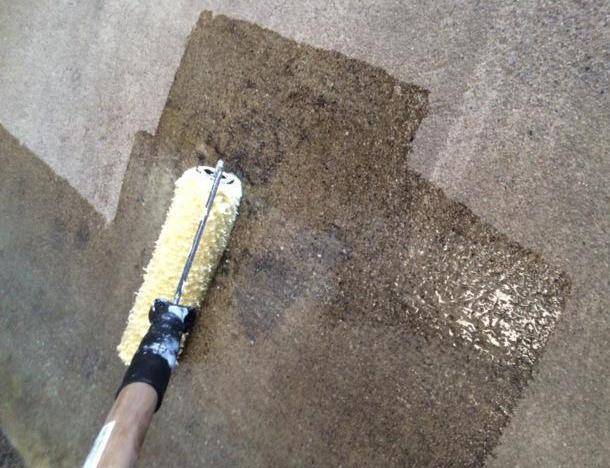
Epoxol
It is used for covering concrete and cement floors. Epoxol, made on the basis of epoxy components, increases the strength of coatings by 3 times and prevents cracking. One of the few formulations that can be used to treat wet coatings.
It can be used not only in apartments, but also in medical centers, children's educational institutions, since it is environmentally friendly and safe. Price for 1 liter - from 350 rubles.
Ashford formula
Water-based. It is recommended to use it to increase the strength of coatings in an apartment, open areas, markets, shopping centers, parking lots. The cost of 1 liter of Ashford formula - from 100 rubles.

Areas of use
Deep penetration primers for concrete are needed in cases where the loads on the concrete base increase significantly, for example, if these are floors in places where a large number of people congregate.
Denser types of concrete require deep impregnation, but liquid in structure, since its pores are so small that dense mixtures cannot penetrate deeply. And for liquid ones, this will not be difficult. They perfectly seep through the pores into the depths, hardening and protecting the material from the inside.
Almost all protective impregnating mixtures, penetrating into the concrete and compacting it, also create additional strength and the entire structure. If it is necessary to improve the properties of a thick screed, just such a solution is used.
Vertical concrete structures, such as walls, do not require a water repellent that penetrates too deeply, since moisture can only penetrate the outer pores. To protect such material, a film-forming protective mixture is sufficient.
Criterias of choice
Concrete simply needs to be impregnated with protective compounds due to its porous structure. During the hydration of cement, air, water, and a cement slurry in the form of a gel may be present in the concrete cavities. This weakens the strength of the products and shortens their service life. However, concrete can be transformed into monolithic stone using impregnations. General requirements for the choice of impregnations:
the safety of the resulting coating after the application of the impregnating composition, the absence of release of harmful components, the concrete surface should not be slippery;
it is important to pay attention to the purpose of solutions, their working properties, such as wear resistance, resistance to water, ultraviolet radiation, temperature conditions, and other external factors;
optimal compatibility with the substrate, good penetration and adhesion;
tangible result in terms of reducing dust formation;
attractiveness of appearance.
Polyurethane impregnation satisfies all these criteria, it is she who is the best way to improve the performance of concrete structures. In addition to strengthening the material, preventing its premature wear, dedusting and increasing the service life, the polyurethane composition allows you to give concrete structures a beautiful, deep and rich color due to the ability to pigment the solution.

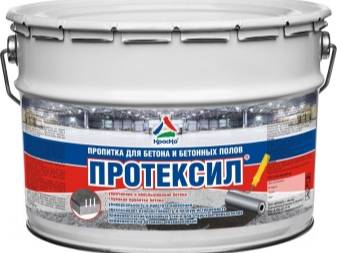
Waterproofing of concrete with "liquid glass"
Liquid glass is a mixture of sodium and potassium silicates. In composition, liquid glass is similar to office glue. The silicates that make up the liquid glass react with concrete components and plug microcracks in layers close to the surface.
Liquid glass is a penetrating waterproofing. It is applied very simply - with a brush or roller. You can do the work yourself. But, it should be noted the fragility of the composition after drying, therefore such waterproofing requires protection from mechanical damage.
Waterproofing of concrete with "liquid glass"
In principle, when using high quality cement mortar and high inherent strength, as well as when creating certain conditions for forming and drying, it is possible to obtain practically waterproof concrete. Such concrete is used in the construction of high-rise buildings and structures for special purposes. Under normal conditions, it is very difficult to make such concrete. Especially when it comes to low-rise private construction.
To increase the service life of buildings and to reduce the effect of the destructive effect of moisture on them, concrete waterproofing is necessary. Various materials can be used for this: concrete sealant; hydrophobic additives for concrete; concrete mastic; overlaid or glued rolls. The main thing is that the waterproofing is selected suitable, and the processing is done professionally.
Acrylic impregnation for concrete
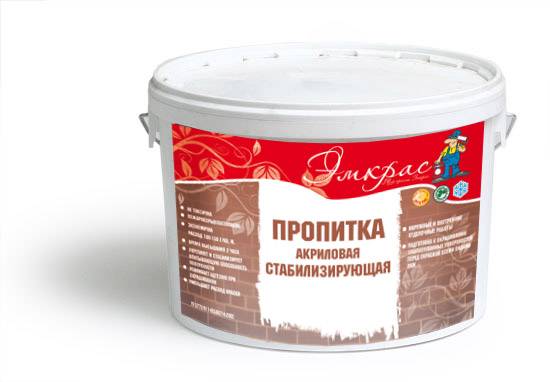 Acrylic impregnation for concrete is rightfully considered a universal tool that simultaneously protects the coating from moisture, mold and destruction.
Acrylic impregnation for concrete is rightfully considered a universal tool that simultaneously protects the coating from moisture, mold and destruction.
This tool belongs to the group of water repellents, and is successfully used for wood, cement, expanded clay concrete and other bases with a porous structure. The impregnation also removes dust from the concrete surface.
Acrylic compounds can be used for both indoor and outdoor use. Often, acrylic compounds are used to further strengthen crumbling and fragile surfaces and porous structures.
It is for such materials that acrylic solution with silicone filler is most effective.
Thanks to its deep penetration, the impregnating compound reliably seals the screed and prevents the formation of mold due to its biocidal action.
These compounds adhere well to both new and old screeds. Colorless formulations do not change the original shade, but only enhance the shine.
In practice, various pigments are widely used, which, when added to an aqueous dispersion of acrylic compositions, make it possible to obtain floors of any color. The consumption of acrylic solutions is low - about 80 g / m2.
When applying acrylic compounds, it is necessary to take into account some features. So the process of distributing such impregnation can be done manually, with a roller or soft brush, or with a spray.
The temperature range of use ranges from 10 to 30 degrees Celsius. The moisture level during application should be 60-80%. Ideally, acrylic compounds are best fixed with a polymer-based finishing varnish, since they protect the concrete from moisture, and not from abrasion.
The polyurethane varnish can be applied one to two hours after the distribution of the protective solution.
Free of organic solvents, acrylic impregnations are safe for people and the environment. They can be used in all designated areas, including hospitals and kindergartens.
It is possible to apply acrylic compounds to damp surfaces. However, they should not be very wet. For example, on a fresh base, such a composition can be used only after five days, the screed installation field.
More than a hundred years have passed since concrete floors were invented. For the entire period, not a single worthy analogue of such grounds has been found. But there were whole technologies for strengthening cement mortars, including with the help of polyurethane, epoxy, acrylic resins and water glass. In this article, only a small part of these methods was considered.
